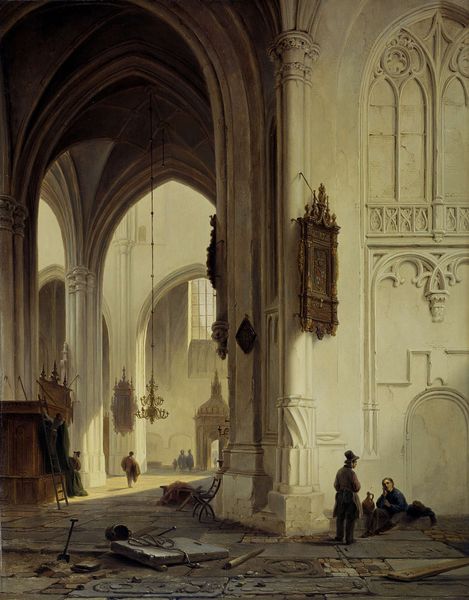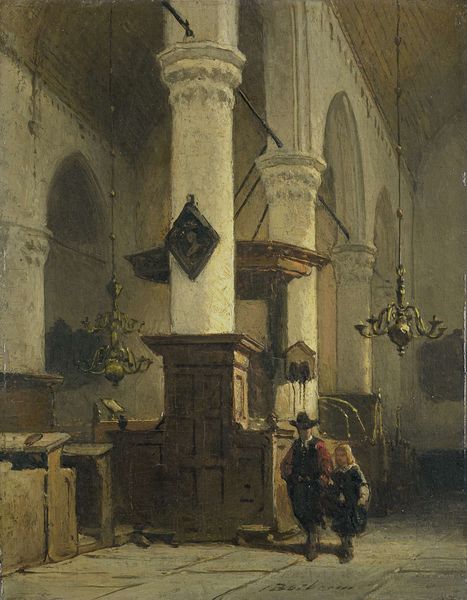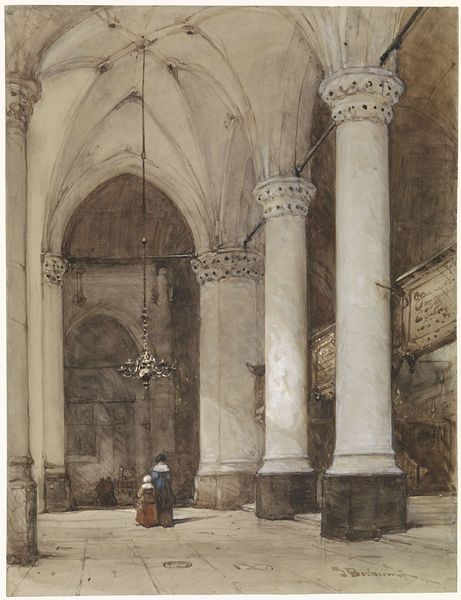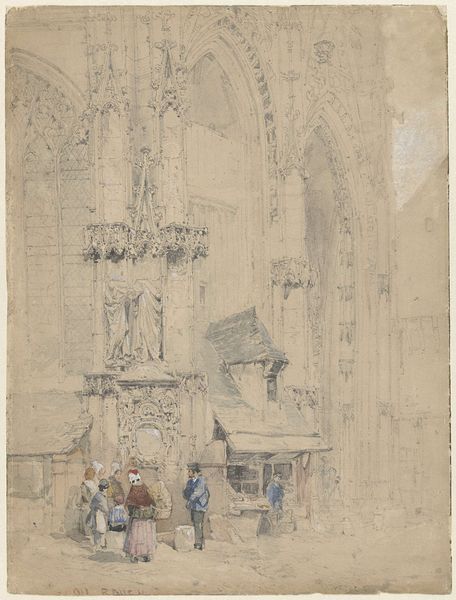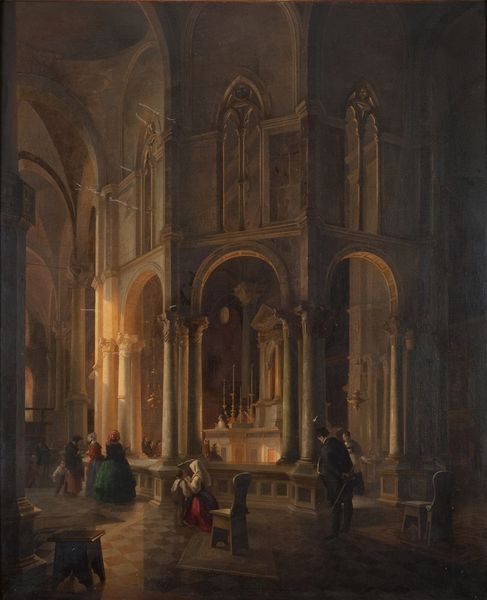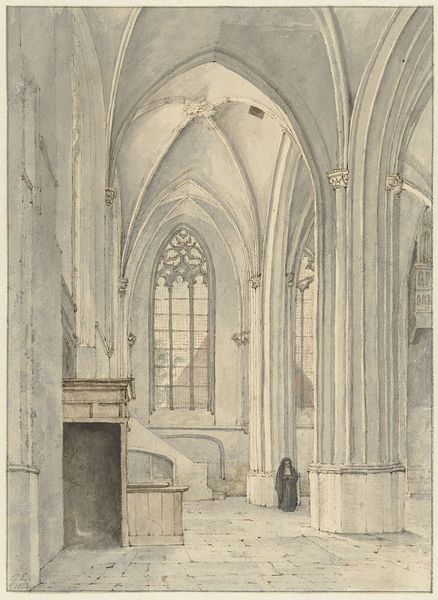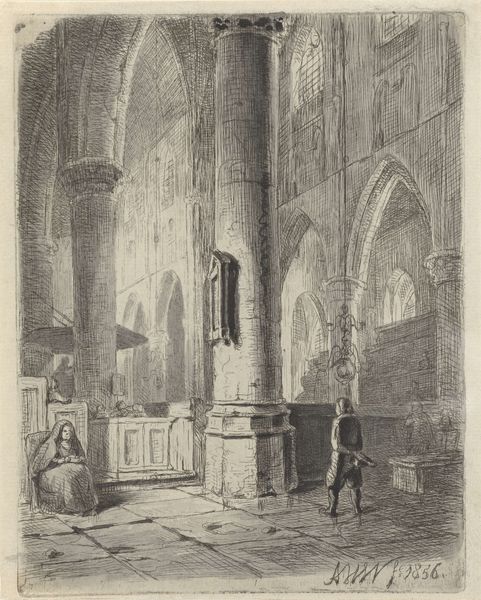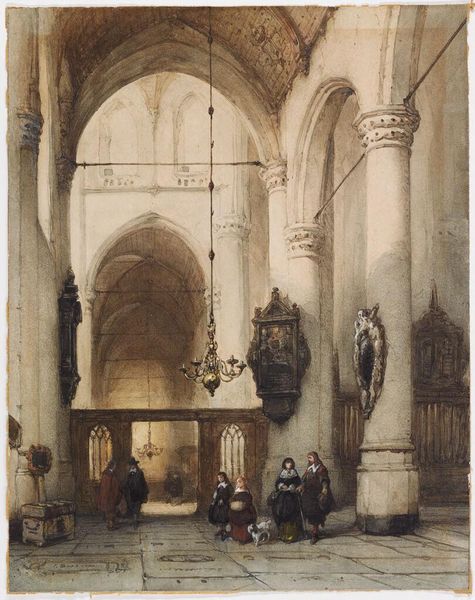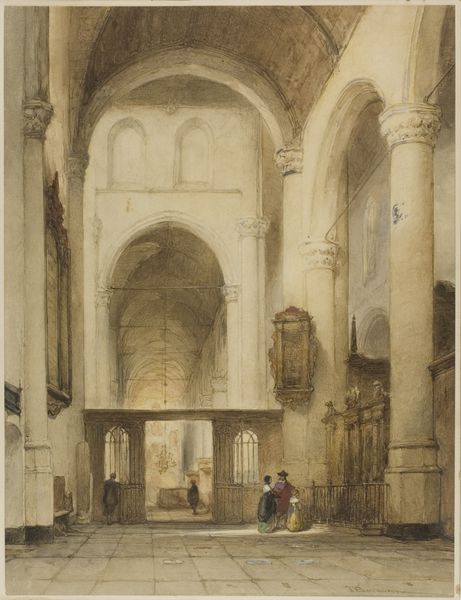
drawing, watercolor, pen
#
drawing
#
16_19th-century
#
landscape
#
charcoal drawing
#
watercolor
#
coloured pencil
#
pen
#
genre-painting
#
watercolor
Dimensions: height 291 mm, width 226 mm
Copyright: Rijks Museum: Open Domain
Curator: Looking at this, the overwhelming impression is of space, distance and tranquility, all achieved through Bosboom’s delicate layering of tones and hues. Editor: Indeed. Here we have "Interior of the Nieuwe Kerk in Delft," a drawing by Johannes Bosboom completed in 1839. Bosboom was part of a generation of Dutch artists who turned inward, focusing on domestic scenes and architectural studies. Consider how Dutch identity was being reimagined after the Napoleonic era. Curator: Yes, this interior is fascinating. Note how the eye is immediately drawn upward, following the towering columns toward the high arches. Bosboom guides our gaze meticulously through his use of light and shadow, almost like a musical composition. Editor: Certainly. But it is the figures populating the space, a woman praying and a group conversing in period garb, that ground the divine space, hinting to class structures within the church and therefore the society of the Netherlands in the early 19th century. Curator: They contribute to the sense of scale, highlighting the overwhelming verticality, creating the architectural perspective, though their arrangement certainly conveys aspects of the space in use. I keep being drawn to the tonality of the grey and white in the drawing. Editor: It also calls into question the Church’s diminishing temporal power following French occupation in contrast to the visual representation. This invites discussion of what is made visible, and also what the Church would rather keep concealed during the early 19th century. Curator: Agreed. Looking closer, you notice the meticulous detail given to the architectural elements contrasting the muted, almost ghostlike quality of the people, creating a compelling juxtaposition of structure versus transience. It draws the observer to examine not just the lines but the emotional tenor, where both the individual and structural converge. Editor: By portraying this interior, Bosboom situates the church not just as a monument but as an arena shaped by societal pressures, opening it to critical dialogue around power, faith, and its spatial consequences. Thank you for considering this perspective with me! Curator: Thank you, those sociopolitical angles definitely cast a different, deeper shade across Bosboom's light.
Comments
No comments
Be the first to comment and join the conversation on the ultimate creative platform.
